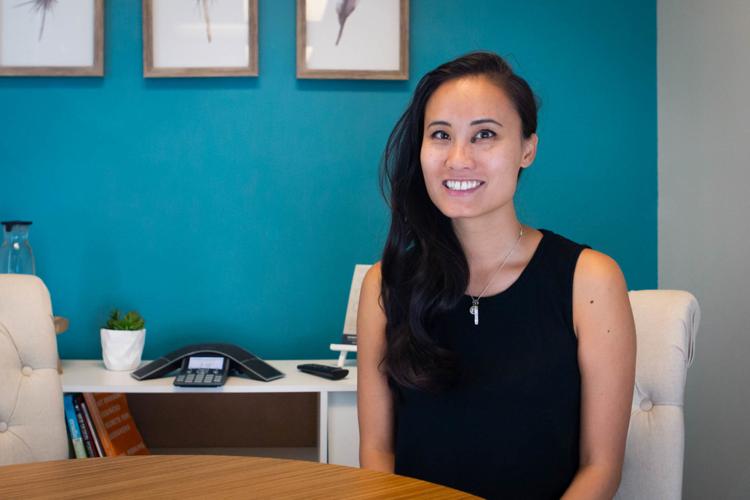TUCSON – Melissa Ortiz, a freelance software developer, encounters a lot of situations that make her feel uneasy. Ortiz has become hyperaware that her chosen industry largely excludes people who look like her.
First, there was the biweekly meetup with 20 people — only three others were women, and she was the only Hispanic in the room. As a self-taught newbie in the tech game, Ortiz was already nervous about joining a group of experienced colleagues. The gender gap and lack of racial and ethnic diversity, she said, amplified that anxiety. Then there was the time in August when she attended React Rally in Salt Lake City. It was marketed to Ortiz as a diversity and inclusion event, but fell short of these expectations, Ortiz said.
“There were only two others with names like Rodriguez or Ortiz. It felt very weird. I was looking out for them, because I was there on a diversity scholarship,” she said.
The tech industry is growing in Arizona and nationally, with net employment in 2018 bringing on more than 260,000 new jobs nationally. Since the employment shortage that followed the Great Recession a decade ago, net tech employment has increased by an estimated 1.9 million jobs. Yet, as the industry is growing, it’s leaving people of color and women behind.
Google, Microsoft and other tech giants have a well-documented record of what could be called an “inclusion exclusion.” Google released its annual diversity report this year, showing that nearly 50% of its employees are white, with less than 7% identifying as Hispanic. Microsoft shared similar data from its 2018 diversity report showing 55% white employees and 6% Hispanic employees.
The divide can lead to minority workers and women in tech feeling ignored, and hinder career advancement. For millions of customers, the dearth can affect how they experience a world becoming ever more reliant on technology.
Experts say Siri or Google Assistant can’t accurately pronounce names different from Jim or Susan. Advancements in artificial intelligence are marred by misidentifications of people of color, and the effects are long lasting and pervasive. Several Arizona organizations have homed in on the practice of excluding people of color in the development of new technologies.
Start Upunidos, founded by Stephanie Bermudez, works to foster binational entrepreneurship in the Arizona-Sonora area and increase diversity within the tech industry by doing so. CO+HOOTS, founded by Jenny Poon, recruits diverse entrepreneurs, within the tech industry and otherwise, to foster the creation of new businesses led by women and people of color. Iconico, founded by Luis Avila, works with organizations to build community engagement campaigns around the idea of fostering diversity and innovation.
Avila said the lack of diversity leads to a disconnect between technology and people of color.
“The people developing technology are predominantly men, predominantly white and predominantly straight, so the creation of new technologies are informed by their experiences and not the communities that are most affected by the technology,” Avila said.
Avila said the key to solving this issue is at the inception of new technologies, not the implementation downstream — meaning diverse communities must be at the table when new technologies are under development so everyone benefits from a new product or service.
A local push for diversity
Census reports show more than 30% of Arizona’s population identify as Hispanic or Latino.
Arizona is ranked third in the nation for net tech employment growth in 2017 and 2018. With Arizona tech on the rise, members of the tech community say that the industry needs to do more to include new groups of people on the local level.
Ortiz said the uneven playing field makes it difficult for people of color and women to enter the industry.
“It’s really intimidating to go into these groups,” she said. “They’re so confident and assertive, and I didn’t feel like I was able to ask the appropriate questions to further my career. It’s a really big set back.”
Facebook, Amazon, Alphabet (Google’s parent company), Microsoft and Apple have the largest market values of any companies in the world. Collectively, the five companies are worth more than the total economy of the United Kingdom, according to the Associated Press. Yet nationally, Latinos make up less than 8% of the U.S. high tech workforce compared to the nearly 70% of the tech workforce that is comprised of whites workers. The Census Bureau projects that, by 2060, nearly 1 in 5 people in the country will be foreign born, making diversity in U.S. workplaces a pressing and timely issue.
Setting diversity strategy
Poon stressed the importance of being intentional about workplace diversity.
“I’m not Latinx, but as a person of color, I can see the challenges of being a minority in a system that was built by men and white men,” said Poon, founder and chief executive of the collaborative workspace. “We need to approach attracting women and people of color differently.”
The company recently celebrated meeting the 50/50 mark for the space’s gender ratio, and Poon said they are always actively seeking innovative ways to diversify the business.
Women and people of color are not the only beneficiaries when a business increases diversity efforts in the workplace. Multiple reports have found that a diverse workplace fosters a larger marketplace share and more innovation within a company. Forbes released a survey in 2011 detailing 321 global companies that had at least $500 million in annual revenue, and found that more than 8 in 10 executives agreed that diversity is crucial to fostering innovation in the workplace.
The Center for American Progress released data showing that businesses that don’t prioritize diversity, see higher turnover rates than businesses that value a diverse workplace.
Poon said she looked around CO+HOOTS at one point and wasn’t satisfied with its level of diversity.
“It hasn’t always been this,” she said. “Five years ago, I remember looking across our room and seeing all middle-class white men and I was like, ‘This is a problem.’”
She set about training her staff to recruit women and people of color.
“As a person of color, I walk into a room and think, ‘How many women are there, and how many look like me?’ How do we cultivate a space that represents and caters to that?” Poon said.
Poon said she and her team began to analyze how women and people of color interact, communicate and enter new spaces.
“Some of it is about how you talk to people and how you welcome them into your space,” she said. “It’s important to be conscious that the language you are using is inclusive.”
She and her team also made sure that the CO+HOOTS website displayed a diverse set of faces to attract a more inclusive client base.
“The first thing people do is search you online,” Poon said. “If all they see is one type of person, then it’s not a place they would, or I would, consider coming” to.
CO+HOOTS is home to a plethora of businesses, including Google Next Gen, of which Avila is a part of. Avila, an immigrant from Mexico, founded Iconico to serve communities that often aren’t brought to the table when developing new social solutions through technology.
“I have this kind of fascination with the way that technology creates efficiencies in the world,” he said, “but also how technology doesn’t take (all) communities into consideration. I find the sweet spot of the best technologies that can engage communities, and create efficiencies for people to live better lives, especially those who need it the most.”
“Invitation only” investments block people of color
Avila said it is important to look at the reasons communities of color are being left behind.
“Capital investment in Latinos is the lowest compared to any other community in the country, even though we are the most entrepreneurial community,” Avila said. “There’s a huge opportunity to amplify and maximize the talent and genius of our community that we aren’t able to access because we don’t have the capital.”
Avila recently helped conduct a report on Latino entrepreneurship and education that found a major contributing factor to the lack of capital investment stems from investors issuing “invitation only” investments. Investors invite people they already know to pitch their businesses, but don’t offer the same opportunity to outsiders.
“If they only know people who look like them or who went to schools like them, of course these Latinos are never going to find out about them,” Avila said.
School systems also bear some responsibility, Avila said, because they need to reach out to students of color to inform them of opportunities to learn about the tech industry.
Ortiz said there needs to be more people like her encouraging other members of the community to explore their options in the field.
She stressed the importance of Latinos leading Latinos.
“When you see a white person talking about it, it doesn’t have the same effect,” Ortiz said.
“But if they see people that started as immigrants, or their parents were immigrants, it shows the possibilities of building generational wealth.”
She has since joined more Hispanic-majority business groups.
Latinos made up 18% of the U.S. population in 2018, according to the Pew Research Center, a number that’s only expected to increase over the coming decades.





